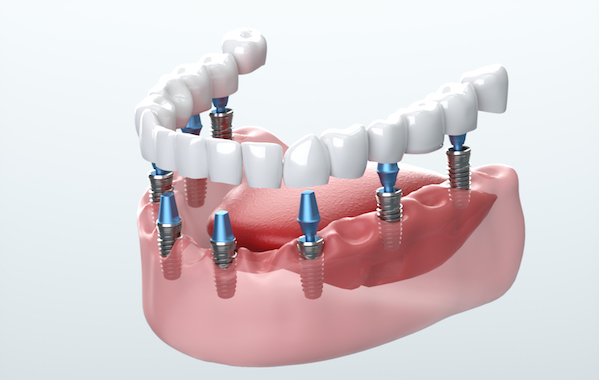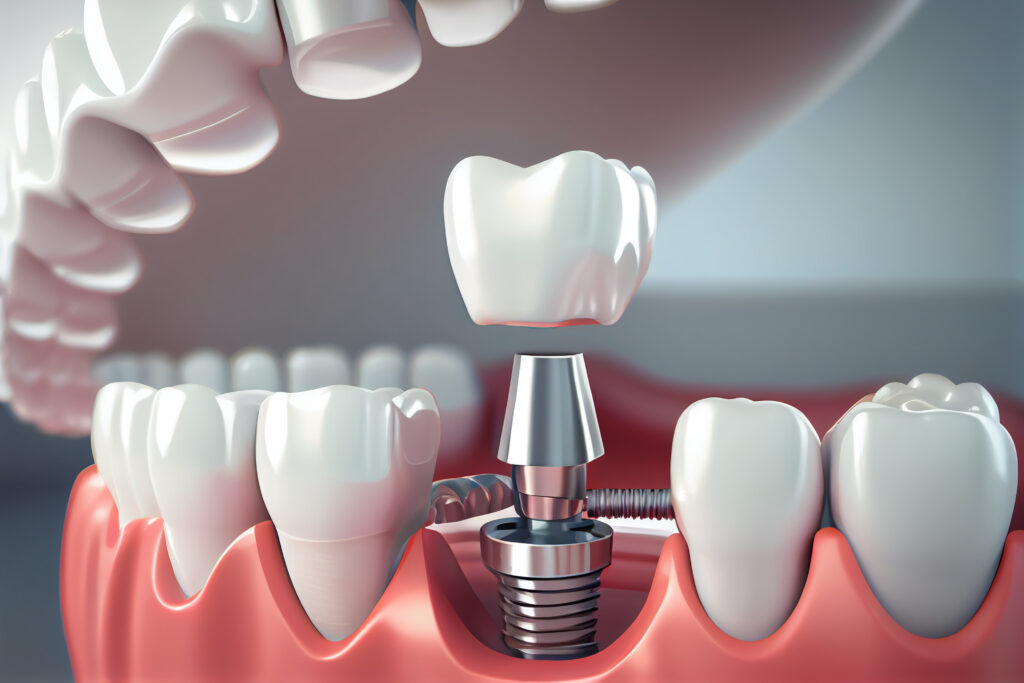Implant Dental Norton Shores MI - Dental Implants: Surgery, Advantages, Risks, & Insurance
Implant Dental Norton Shores MI - Dental Implants: Surgery, Advantages, Risks, & Insurance
Blog Article
Implants Dental Implants Muskegon MI - Affordable Dental Implants
The journey toward dental implants begins with a thorough assessment of the jawbone's condition. When there may be inadequate bone density to help an implant, bone grafting becomes a crucial his response procedure to recreate a steady foundation. Understanding how a lot bone grafting is required for dental implants greatly their website influences the treatment plan, timeline, and overall success rate.
The quantity of bone grafting required is dependent upon a number of components, including the extent of bone loss, the implant's dimension, and the precise location inside the mouth. In cases of significant bone loss because of periodontal ailments, trauma, or prolonged tooth loss, more in depth grafting could additionally be necessary. Conversely, if the bone loss is minimal, a smaller graft might suffice.
Dental Implant Grand Rapids MI - How Much Do Dental Implants Cost?
The analysis process usually includes imaging studies similar to X-rays or 3D scans, permitting the dental skilled to visualize the bone structure (Cheap Dental Implants Norton Shores MI). These images help in figuring out the standard and quantity of present bone. If the bone is deemed inadequate, the dentist will then outline the suitable grafting procedures
Grafting may be sourced from varied areas. Autografts, which contain harvesting bone from the patient's own physique, are often deemed the gold normal. These offer excellent integration with the present bone but come with the disadvantage of extra surgery. Other options embody allografts, which use donor bone, and artificial materials designed to mimic natural bone. Each option has its own implications on healing and success rates.
After figuring out the necessary amount of bone grafting, the dental skilled will create a tailor-made plan for the patient. This plan could embody the timing of bone grafting in relation to the implant placement. In some circumstances, a graft could be carried out simultaneously with the implant surgery. Alternatively, in additional difficult scenarios, a separate healing interval is indicated.
Healing timelines vary primarily based on the person's health, the extent of grafting, and the kind of graft used. Generally, the healing of a bone graft takes a number of months before an implant can be positioned. During this time, bone regeneration occurs, resulting in a secure base for the implant.
Dental Implants Whole Mouth Grand Haven MI - Dental Implants Tooth Replacement
Patients usually wonder about the risks related to bone grafting. While problems such as infection or graft failure are potential, these occasions are relatively uncommon. Adhering to post-operative care instructions and attending follow-up appointments decrease risks and promote therapeutic.
Once the bone has adequately healed, the dentist assesses the graft's success by evaluating the bone density and stability. If every thing appears favorable, the following steps towards putting the dental implant can start. The success of this next step largely hinges on the standard of the bone graft and its integration with the encompassing bone.
Cost considerations play an essential function within the decision-making course of. The expense of bone grafting varies based on materials used, the complexity of the case, and geographic location. It is essential for sufferers to discuss funds upfront to keep away from unexpected bills later in the therapy.
Dental Implant Muskegon Heights MI - What are dental Implants? Types, procedures, and more
Also, sufferers should have practical expectations concerning the timeline and outcomes. Many factors can influence how much bone grafting is needed and its general effectiveness. A collaborative method involving the patient and the dental group not solely ensures readability but also enhances the probabilities of a profitable end result.

Maintaining good oral hygiene and common dental visits following the process is significant. These practices can prevent issues and be positive that each the graft and the implant remain steady over time. The ongoing relationship with a dental skilled is crucial, especially in the months following the procedures.
In conclusion, understanding how much bone grafting is needed for dental implants encompasses a multi-faceted method that considers bone quality, grafting varieties, therapeutic time, and overall affected person health. The balance between achieving the specified aesthetic and useful outcomes whereas minimizing risks and problems is at the heart of dental implant procedures. The journey may be intensive, but a well-planned strategy maximizes the possibilities for a profitable, long-lasting lead to restorative dental work.
- Determining the quantity of bone grafting required for dental implants typically hinges on the preliminary bone density and quantity of the affected person's jawbone.
- Each patient's case is unique; components corresponding to previous extractions, periodontal disease, or trauma can influence the necessity for grafting.
- A 3D imaging scan is typically conducted to evaluate the precise dimensions of the obtainable bone and inform the grafting technique.
- The type of dental implant placement—immediate or delayed—may dictate the amount of bone grafting needed for stability and integration.
- Different forms of graft supplies, similar to autografts, allografts, or artificial options, can impression how a lot grafting material is needed.
- Assessing the affected person's overall health, age, and way of life habits can affect the therapeutic process, influencing graft quantity necessities.
- The depth and placement of the implant can necessitate varying quantities of graft materials to secure optimal outcomes.
- Successful integration of the dental implant usually relies on sufficient bone density, resulting in a tailor-made grafting method for each particular person.
- Consultation with an oral surgeon will provide a clearer estimate of the bone grafting needed based mostly on comprehensive evaluations and imaging results.
- Post-grafting healing time varies; thus, a cautious analysis is crucial to discover out the final quantity of grafting required for profitable implantation.undefinedHow much bone grafting is required for dental implants?
Cheap Dental Implants Wyoming MI - Dental Implants: What You Should Know
What is bone grafting and why is it needed for dental implants?undefinedBone grafting is a surgical procedure that adds bone or bone-like material to the jawbone. It is critical for dental implants when the present bone is insufficient to support the implant, making certain stability and long-term success.
How do I know if I need a bone graft for dental implants?undefinedYour dentist or oral surgeon will evaluate your jawbone via x-rays or 3D imaging to find out its density and quantity. If they find that you lack adequate bone, they'll advocate a bone graft before proceeding with the dental implant.
Dental Implant Muskegon Heights MI - Dental Implants: Tooth Replacement Solution
What components influence the amount of bone grafting needed?undefinedFactors embody the scale and location of the implant website, the health and density of present bone, and individual healing capacity (Dental Implant Dentures Holland MI). These parts assist the dentist decide the suitable quantity of graft materials wanted
Are there different varieties of bone grafts used for dental implants?undefinedYes, there are several varieties, together with autografts (from your individual body), allografts (from a donor), xenografts (from animals), and synthetic graft supplies. Each type has unique benefits and can be selected based mostly on particular person patient wants.
Dental Implant Muskegon Heights MI - Dental Implants - Top Oral Surgeon
How long does the bone grafting procedure take?undefinedThe length varies primarily based on the complexity of the grafting process and the extent of the world treated. Generally, a bone grafting procedure can take anyplace from 30 minutes to some hours, depending on the precise circumstances.
What is the recovery time after a bone graft for implants?undefinedRecovery times can differ, but usually, initial healing would possibly take a couple of weeks, whereas full integration of the graft with the bone can take several months. Your dentist will present a customized timeline based mostly in your state of affairs.

Will I experience pain after the bone grafting procedure?undefinedSome discomfort is widespread after a bone graft, but it's usually manageable with prescribed pain medication. Most patients report that pain diminishes considerably within a few days.
Dental Teeth Implants Muskegon Heights MI - Dental Implants - Tooth Replacement
How does bone grafting have an effect on the general dental implant timeline?undefinedBone grafting might extend the general timeline for receiving dental implants, as it requires a therapeutic period before implants could be placed. This can add several months to the method however is important for a successful implant placement.

Are there risks associated with bone grafting for dental implants?undefinedLike any surgical procedure, bone grafting carries some risks, corresponding to infection, graft failure, or problems related to anesthesia. However, when carried out by an experienced professional, these risks are usually low.
Can I actually have dental implants placed instantly after a bone graft?undefinedIn many circumstances, dental implants cannot be positioned immediately after a bone graft as a outcome of want for the graft to combine into the existing bone. However, some techniques, like quick loading, might allow for this under specific conditions. Your provider will advise you on the finest option primarily based on your circumstances.
Report this page